If you’re new to painting board game miniatures and want to get started with speed painting, this post can guide you. Speed painting requires a different approach than traditional miniature painting. It involves embracing the simplicity and high-efficiency techniques. Board game miniatures are an excellent starting point for learning how to paint more quickly and effectively. Unlike tabletop wargames like Warhammer 40k or AOS, where intricate details and overall scenics are crucial for immersion, the quality of a good board game primarily comes from its gameplay rather than the miniature elements.
In this article, I’ll show you fast, efficient methods for painting your favorite board game miniatures, allowing you to jump into the gameplay with an impressive looking set for your players. If you tend to overthink and aim for perfection while painting, this article can also help you overcome that mental block. Speed painting board game miniatures not only accelerates your process but also frees your creative mind.

Materials for Speed Painting Board Games
These aren’t necessary supplies for speed painting minis, or even just painting anything; it’s just what I use. You can replace many of these items with whatever you have on hand (be creative!) or even choose to skip some altogether.

The core principle is to utilize what’s readily available to you and operate within your budget. For deeper insights into crucial supplies for miniature painting, explore this essential miniature painting supply article.
| Supplies and Tools to Speed Paint Miniatures | Description |
|---|---|
| Vallejo Surface Primer | Recommended for smooth application and quick drying. |
| Badger Patriot 105 Airbrush | Suitable for airbrush priming (see tutorial) |
| Well-Ventilated Area | Work in a well-ventilated space; if indoors, use a spray booth. |
| Air Compressor | Maintain air pressure between 25-30 PSI for an even coat. |
| Hair Dryer | Essential for speeding up the drying of the base coat. |
| Acrylic Paints | Range of colors for base coating, washes, and detailing. |
| Large Brush | Used for the ‘Slap Chop’ method during base coating. |
| Versatile Wash (e.g., Agrax Earthshade) | Recommended for depth and shadow. |
| Secondary Wash Colors | Different wash colors for depth and contrast. |
| Fine Brushes | Detailing and customization, especially for focal elements. |
| Palette | For mixing and diluting paints as needed. |
| Water | For adjusting paint consistency (how to thin paints for painting miniatures). |
| Painting handle | Helps with comfort and stability while painting miniatures. |

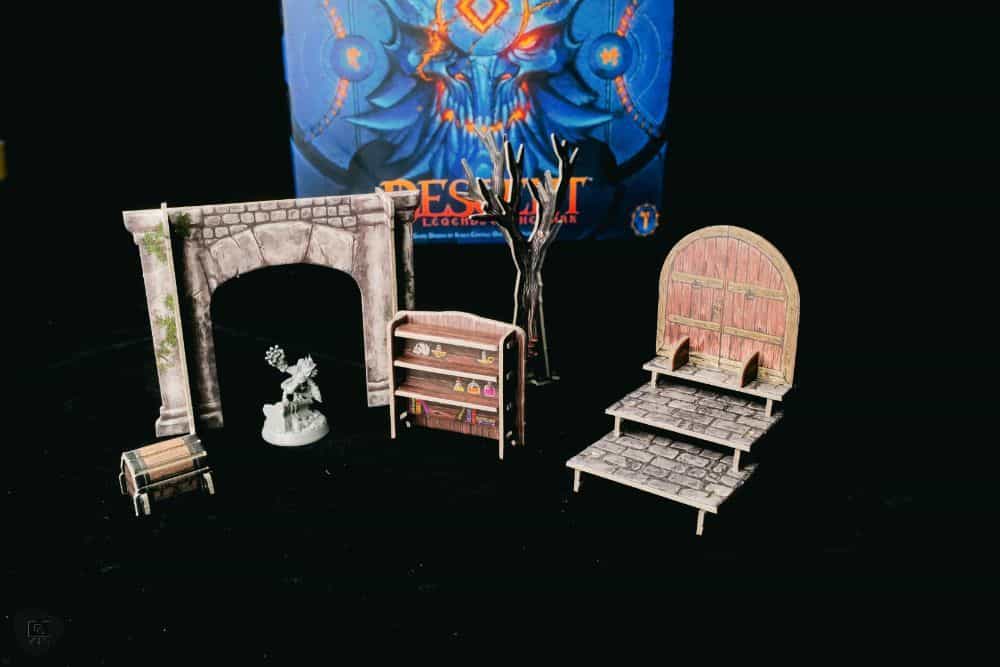
1. Setting Up: Priming Your Miniatures
The journey to a beautifully painted miniature begins with priming. Vallejo Surface Primer is my go-to for its smooth application and quick drying time. When using an airbrush, like the Badger Patriot 105, I apply the primer straight from the bottle without thinning it.
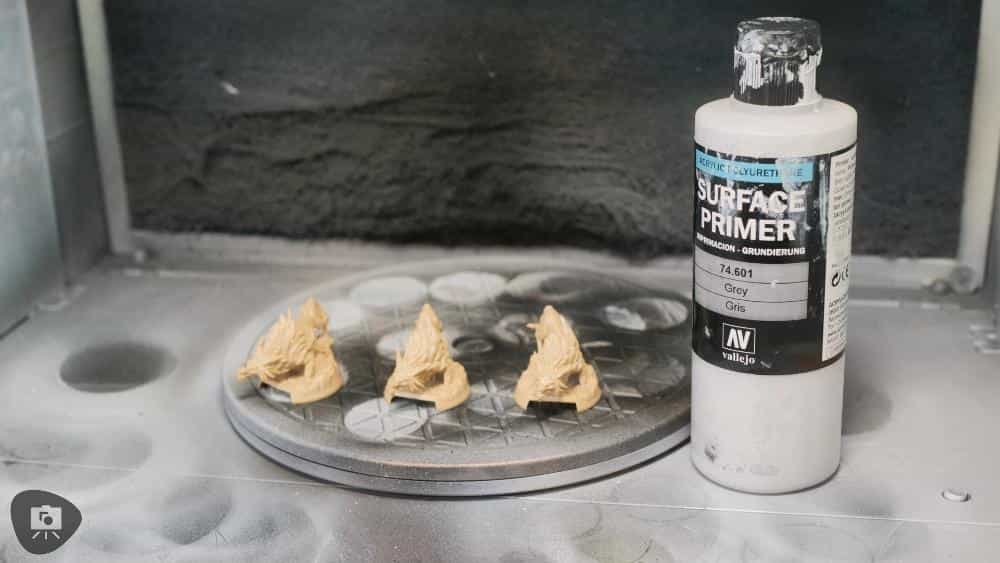

READ MORE: BADGER 105 AIRBRUSH FOR PAINTING MINIATURES (REVIEW)
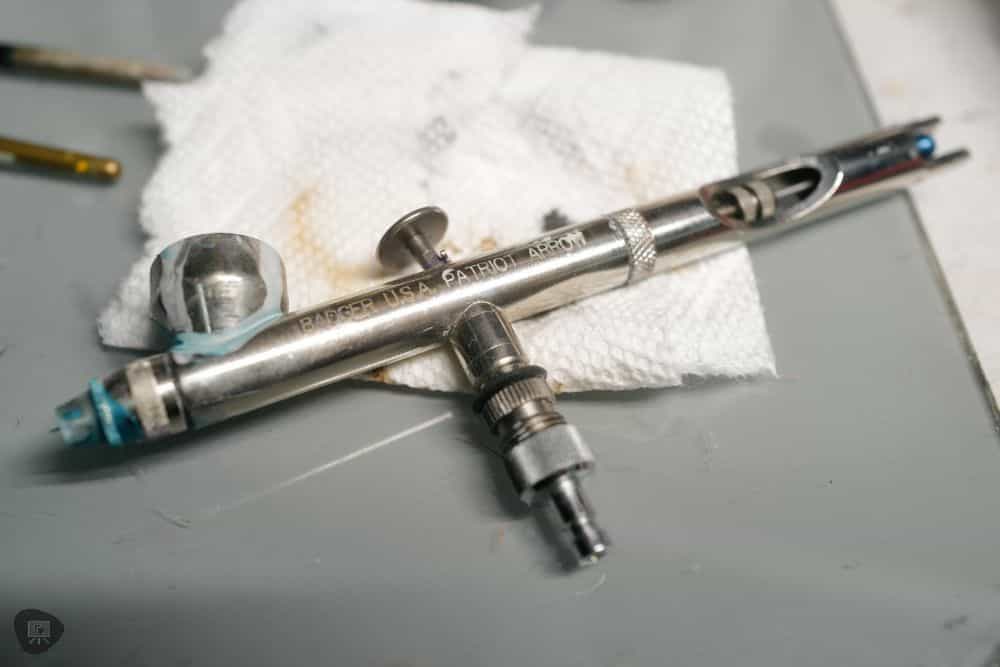
Working in a well-ventilated area, such as a spray booth, and keeping the air pressure between 25 and 30 PSI is crucial for an even coat.
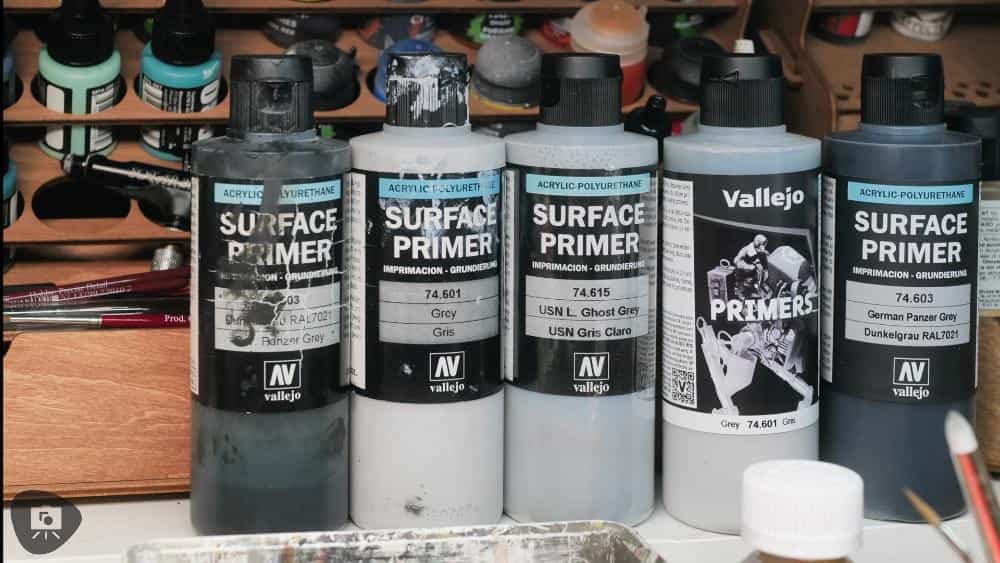
A good priming application is especially crucial for “Descent: Legends of the Dark” miniatures, as it helps preserve their intricate details and helps overlying acrylic paint stick.
2. Base Coating: The Slap Chop Method
After priming, we dive into the base coating. The ‘Slap Chop’ method is a game-changer for speed painting. With a large brush, you quickly apply your primary colors in a way that is reminiscent of a line-chef wielding an 8″ chef’s knife and chopping vegetables for a hot stew.

This method is not about precision; it’s about coverage and efficiency. In games like “Descent,” where you have a lot of miniatures to paint, this method ensures you’re not spending too much time on any single figure.
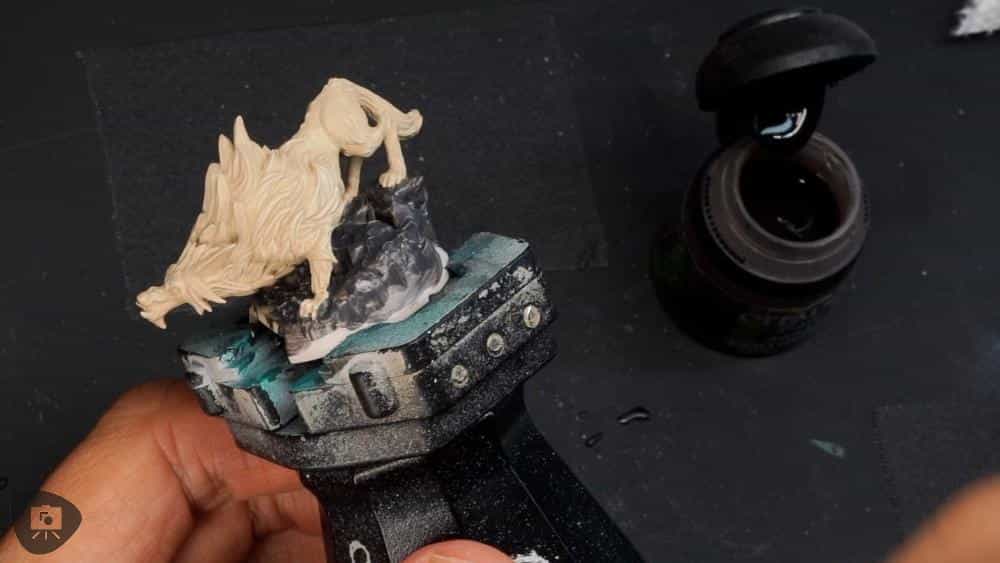
3. Drying Techniques: Using a Hair Dryer
To speed up the drying process of the base coat, I use a hair dryer. This common household appliance is a game-changer, significantly reducing waiting time and allowing you to move on to the next steps more quickly.
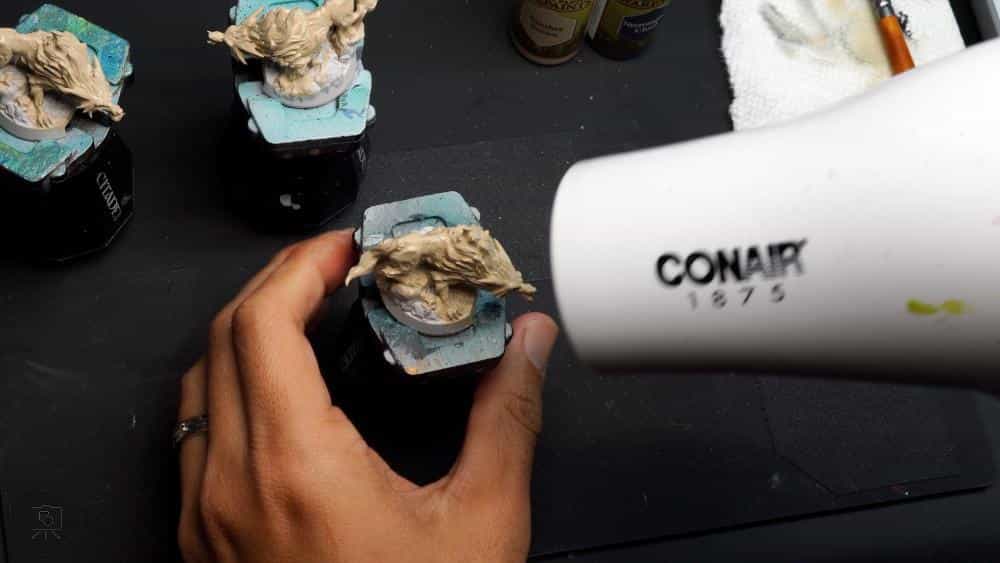
I love my hair dryer. It’s super inexpensive and has lasted years and years; saving me thousands of hours!
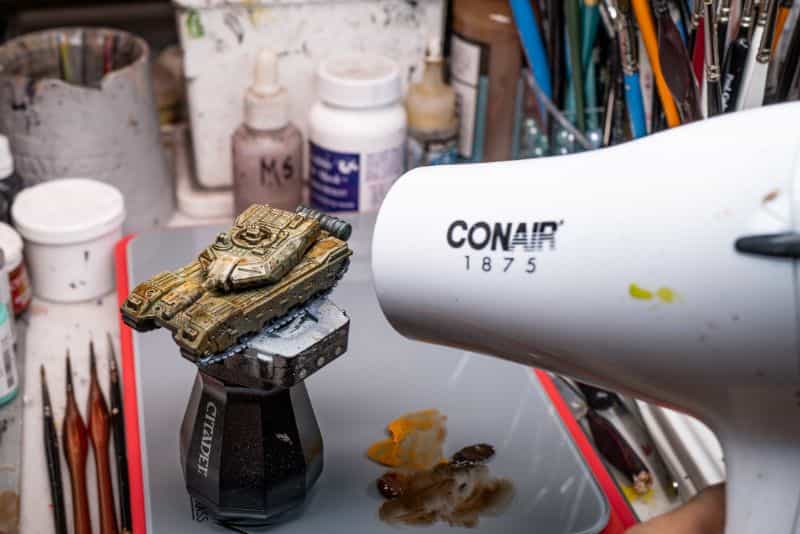
RELATED: THREE REASONS YOU NEED A HAIR DRYER FOR MINIATURE PAINTING
4. Applying Washes: The Key to Quick Detailing
Washes are the cornerstone of speed painting, particularly for board game miniatures. A versatile wash like Agrax Earthshade can add instant depth and shadow.
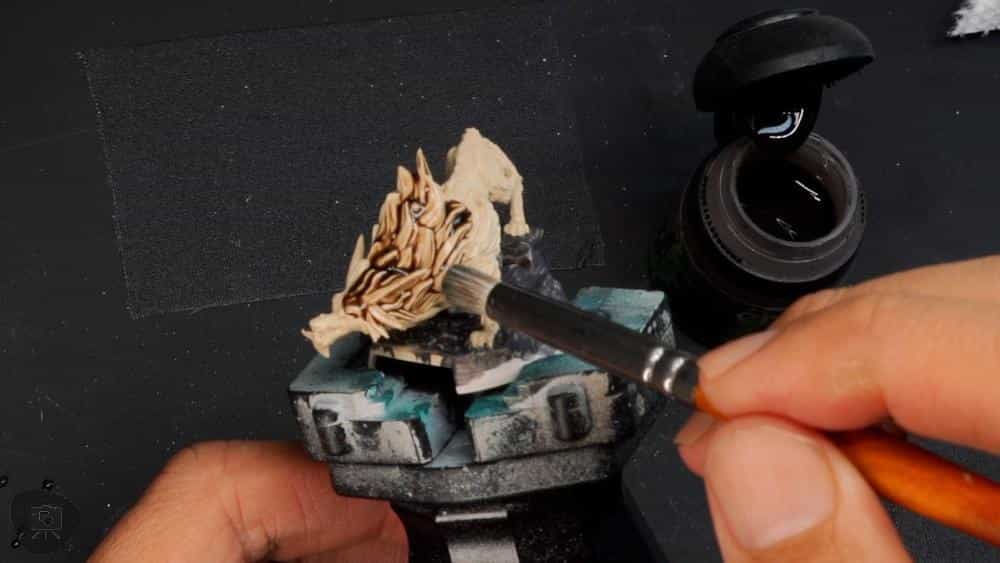
Apply it generously, allowing it to seep into the recesses. This step is crucial for bringing out the details without spending hours on the details you may not care to notice while playing the game itself.
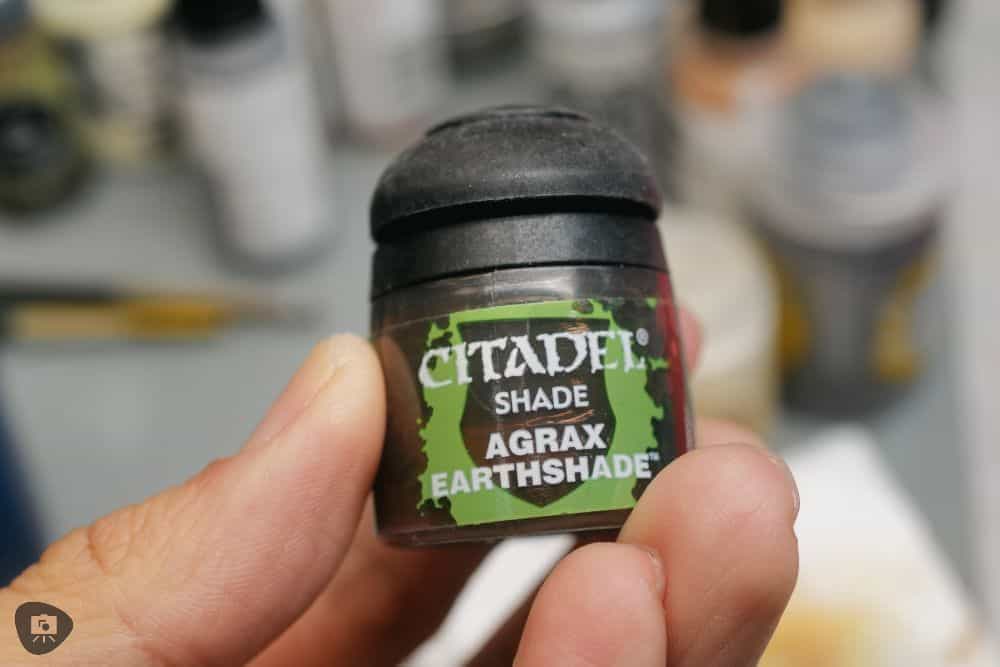
In this case, I relied on a simple process of using a shading wash over a light colored base color, e.g., the light colored undercoat. Using a big brush, I apply it liberally over my model where any of the color should be brown.
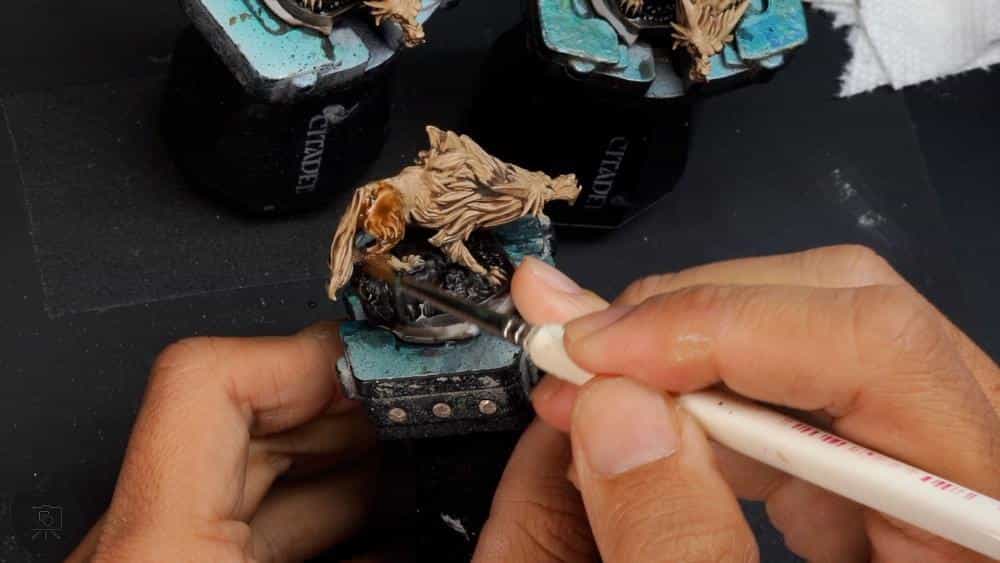
5. Adding Depth and Contrast: Secondary Washes
For adding more character to your miniatures, a second wash with a different color can provide more depth and contrast.
RELATED: MY FAVORITE 7 WASHES OF ALL TIME FOR MINIATURE PAINTING
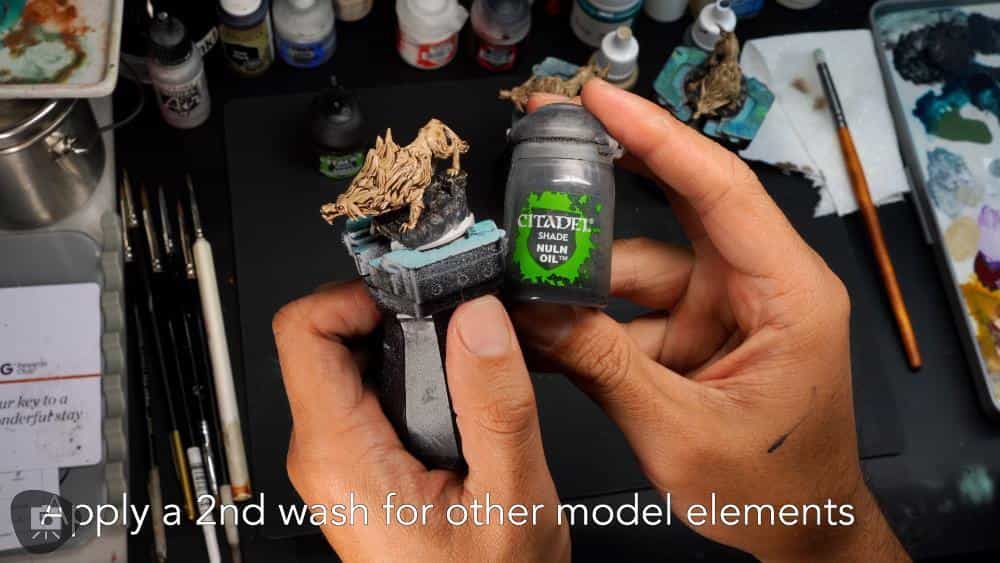
This is particularly effective for board game miniature characters, where you want to distinguish between different textures like cloth, armor, and skin. This is also true when you think about all the miniatures in a collection when viewed side-by-side.
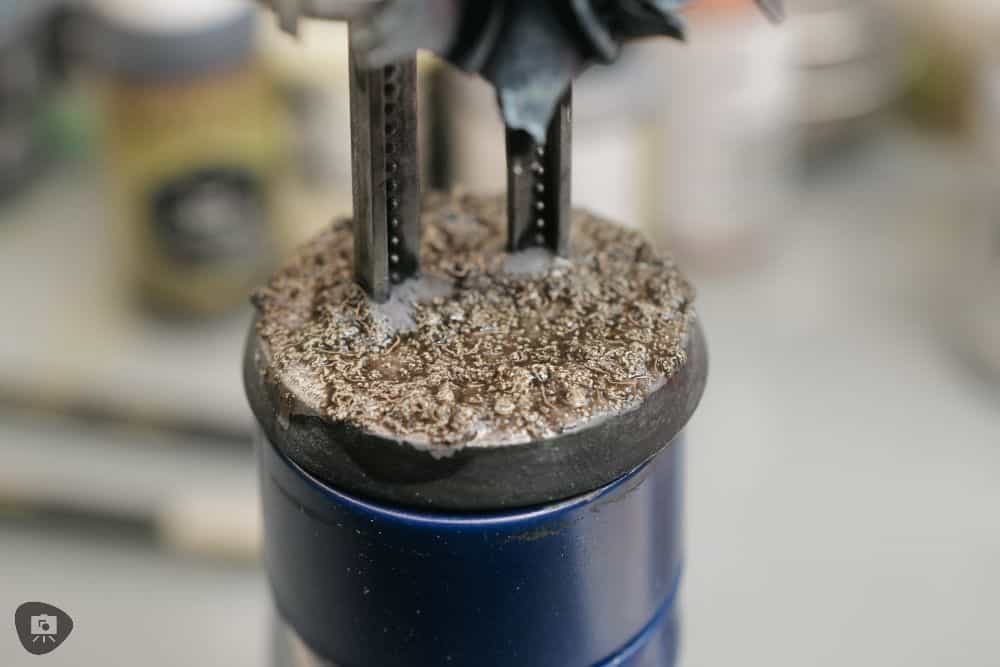
For example, painting wolves to be a darker brown versus the lighter colored zombie models adds a striking visual difference when placed side by side.
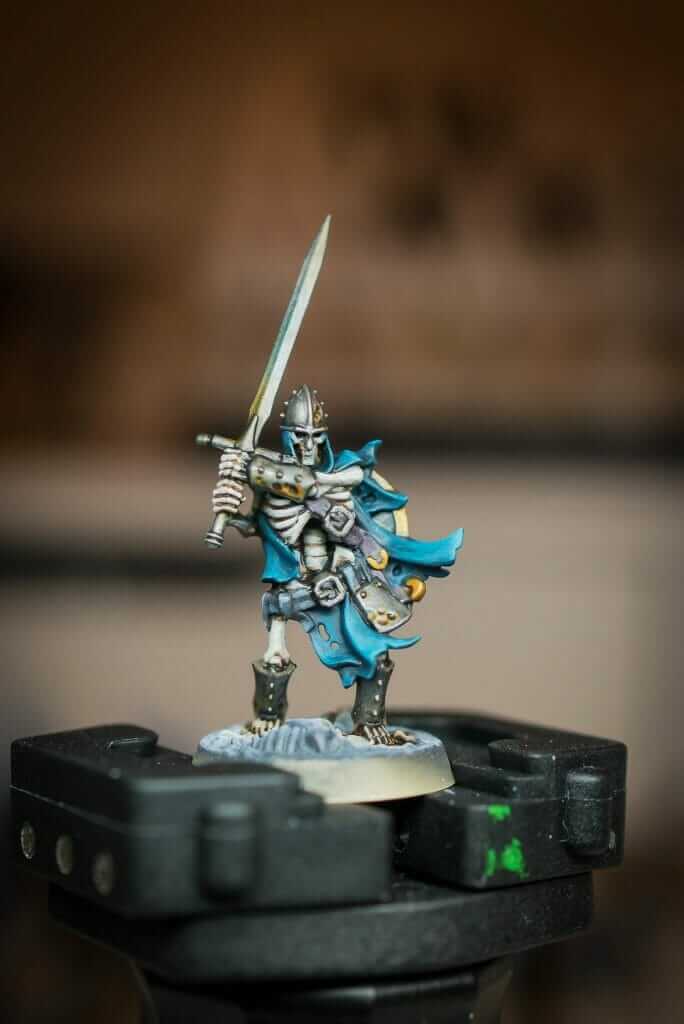
6. Dry Brushing for Subtle Highlights
Dry brushing comes in handy for adding subtle highlights. With a light hand, brush over the raised areas to create a natural-looking highlight.

For more detailed insights in how to best apply and use the dry brushing technique, take a look at this simple guide with quick tips. This technique is especially effective for textured surfaces like fur or chainmail, common in board game minis (or any miniatures for that matter).
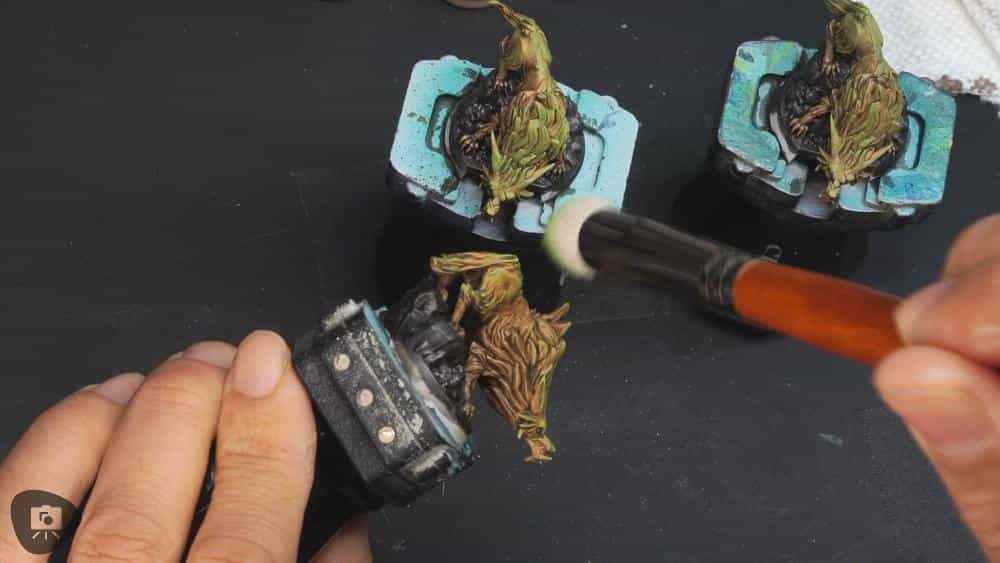
7. Detailing and Customization: Beyond the Basics
While speed painting is about efficiency, you can still add unique touches. Focusing on key elements like a character’s weapon or distinctive armor can make your board gaming miniatures stand out.

In my example, I painted the eyes with a subtle purple glow. I also made attempts to highlight the teeth and fangs, as this helps to accentuate the face.

Use a finer brush for these details, but keep it quick and simple.
8. Tying It All Together: A Final Wash
A final wash can tie together all the previous layers, creating a cohesive and polished look. This step is especially important for maintaining consistency when you have a few different colors that may look a bit “tacked-on” or don’t quite blend together.
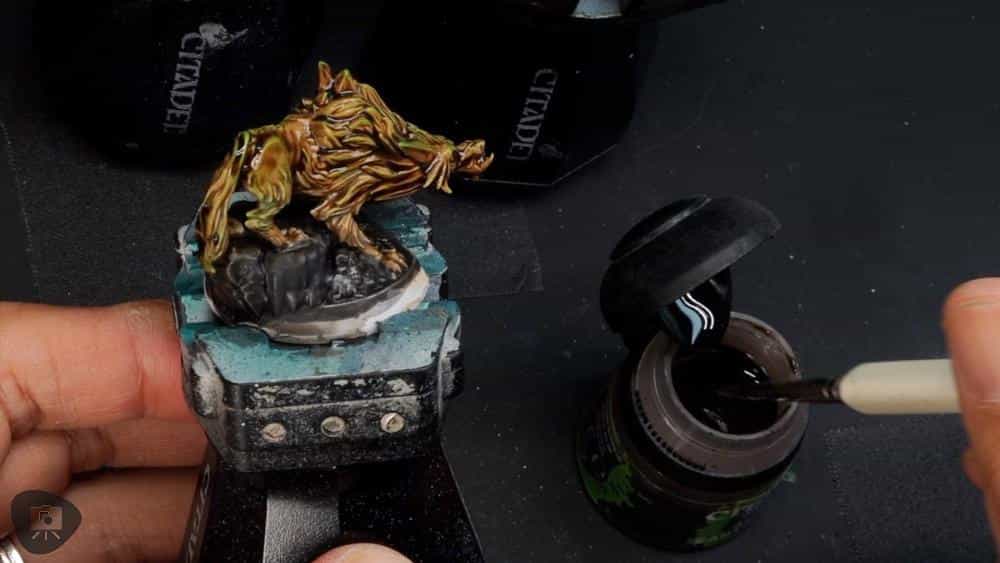
A final wash layer can help push these elements closer together from a visual stand point. Be subtle though, and remember that a wash is often a shading medium and will darken the overall look of the colors underneath.
9. Detail Work: Optional Steps for Added Flair
If time allows, adding finer details like eyes or intricate symbols can elevate your miniatures. This step is optional but recommended for focal pieces or main character models. A steady hand and a fine-tipped brush are key here.
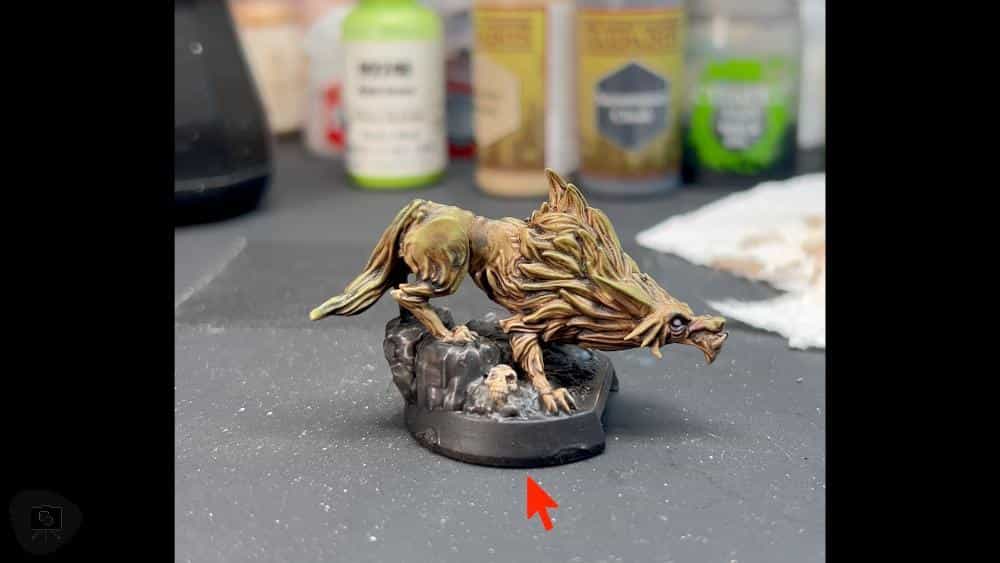
This is where you can use your imagination and experimental instincts. Not every miniature will look better with more detail. Certainly, I’ve learned over the years that there is a point where “diminishing returns” does come into play. Remember that it’s still true in miniature painting: Less is more.
10. Finishing Touches: Painting the Base
Don’t overlook the base. A well-painted base can frame your miniature and enhance its overall appearance. For “Descent” miniatures or any board game for that matter, I like keeping things simple. Overly ornate base paint jobs can dilute the hard work and distract a viewer from the actual miniature itself.
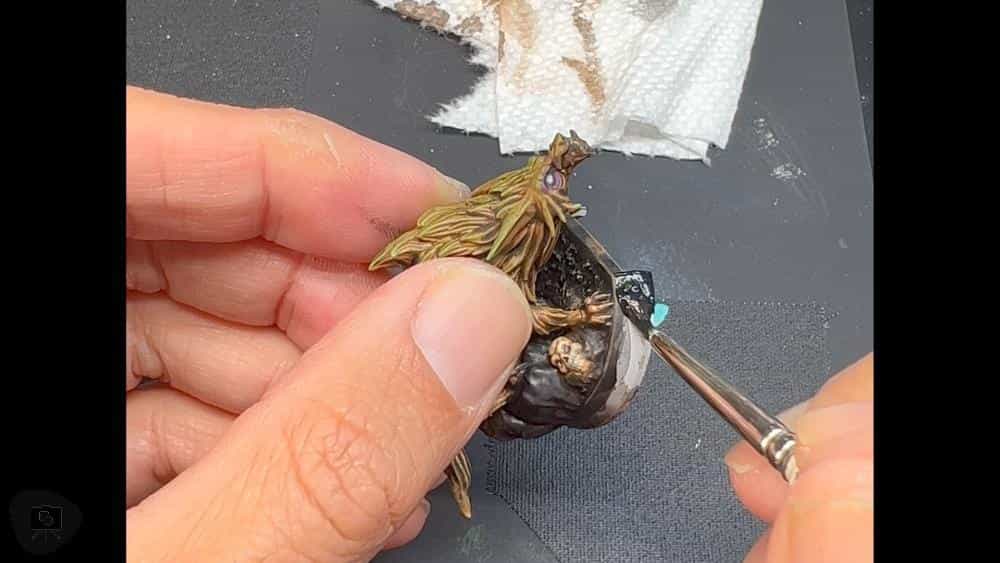
For speed painting, a simple yet effective approach is to paint the base rim a matte black, giving a neat, professional look. When you’re finished, also consider 1-2 coats of a good matte varnish.

A Descent Miniature Example
In case you missed the note above; here’s the video that accompanies this article. Depending on how you guys learn best, I figure I can help by using both mediums as much as I can. Please let me know if you enjoyed this article with a comment or emailing me.
Conclusion
Speed painting is a valuable skill for any board game enthusiast, particularly for immersive or narrative style games like “Descent: Legends of the Dark.” I hope you found this guide helpful! Remember, the key is to find a balance between speed and quality, and with practice, you’ll develop techniques that work best for your style.
Thank for reading! Let me know what you think with a comment below!
Happy painting!




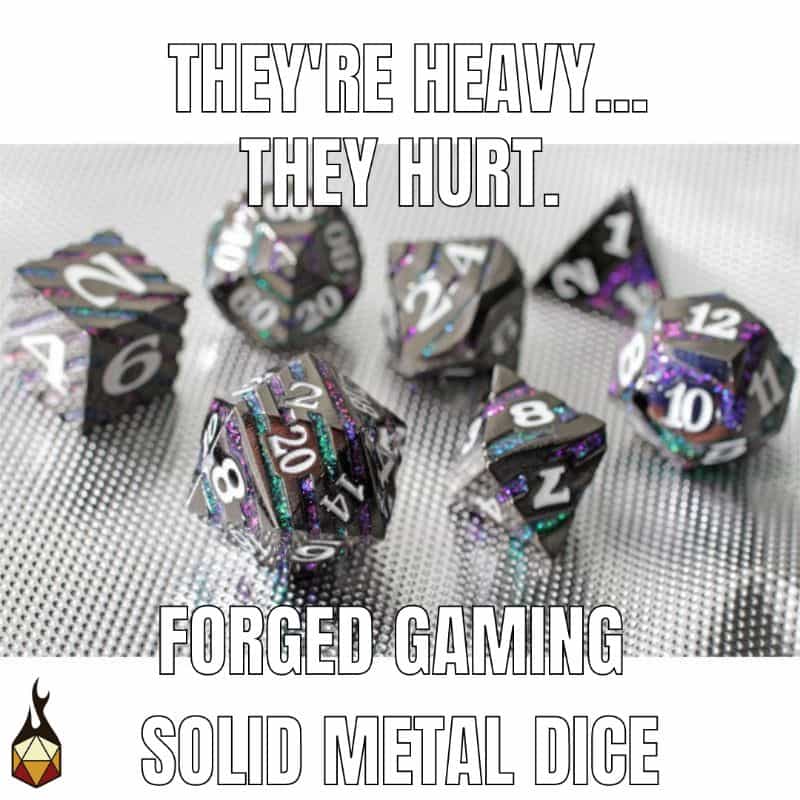
Tangible Day on YouTube (Miniatures and More!)


